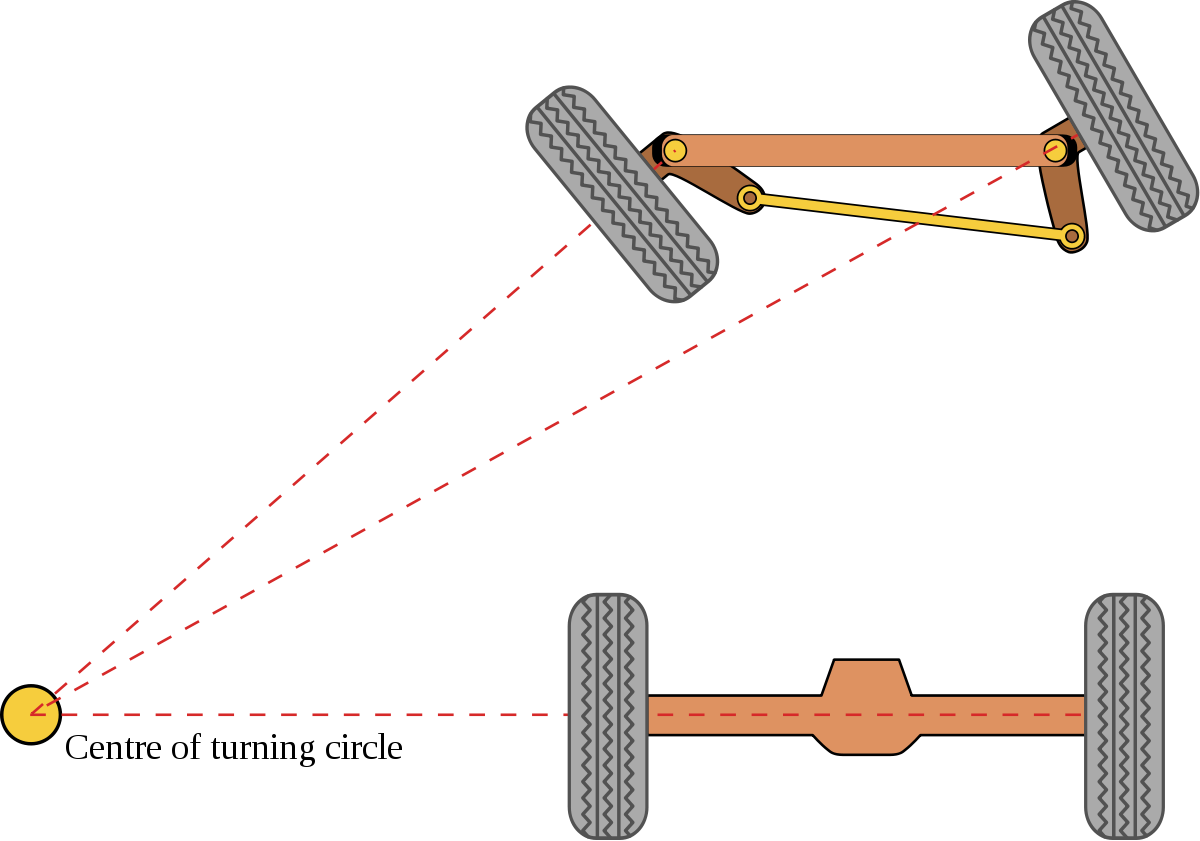Hi there,
One of my fascinations in the world of car mechanics is the steering system. I always wanted to be informed of steering system specs, such as the number of steering wheel turns, steering gear ratio, turning radius etc. but manufacturers generally do not seem interested in sharing this information. So I try to gather some of those data myself when needed. It's not always exact but mostly enough to give some idea.
My car has the DCC package which includes "progressive steering" in SEAT speak. Some automotive publications and even SEAT's own documents mention shortly about this progressive steering feature and they say it is a speed-dependent system. I find this information highly suspicious, because as far as I know a speed-dependent system is about altering the level of electric/hydraulic assistance depending on the speed and our cars may or may not have it. On the other hand, a progressive steering system is something else altogether, as I know from my previous car and some other cars I've read about: The mechanical gearing of such a system has different ratios on the extremes of the rack than on the middle. So turning the steering wheel near the center has a different effect on the wheel than it has near the sides.
This morning I made some measurements on my parked car, by turning the wheel to predefined angles in 90-degree steps and taking note of the angle of the wheel. My findings are consistent with what I said about the variable gearing above :
Steering wheel angle Wheel angle Ratio
---------------------- ------------- -----
90 ... 11.478 ... 1:7.841
180 ... 18.994 ... 1:9.476
270 ... 25.418 ... 1:10.622
360 ... 33.714 ... 1:10.678
As one can see from the data above, turning the steering wheel 8 degrees near the center turns the wheel 1 degree, while it needs 10 degrees of steering wheel movement for that 1 degree of wheel turns near the lock. This looks consistent with what I know about the "progressive steering" systems.
But what I find interesting is the very-low looking gear ratios. Some luxury cars have systems with 16:1 or 18:1 ratios, most of the mainstream cars have 14:1 or 15:1 ratios and some cars with sporting tendencies have 12:1 steering systems. The results I have here are between 8:1 and 11:1 and that seemed very low to me and I thought that I may be making some mistakes when taking the measurements or calculating.
Now I need to verify this measurement results with some concrete data from the factory to satisfy my curiosity.
Any information on this would be highly appreciated.
Cheers,
Serdar
One of my fascinations in the world of car mechanics is the steering system. I always wanted to be informed of steering system specs, such as the number of steering wheel turns, steering gear ratio, turning radius etc. but manufacturers generally do not seem interested in sharing this information. So I try to gather some of those data myself when needed. It's not always exact but mostly enough to give some idea.
My car has the DCC package which includes "progressive steering" in SEAT speak. Some automotive publications and even SEAT's own documents mention shortly about this progressive steering feature and they say it is a speed-dependent system. I find this information highly suspicious, because as far as I know a speed-dependent system is about altering the level of electric/hydraulic assistance depending on the speed and our cars may or may not have it. On the other hand, a progressive steering system is something else altogether, as I know from my previous car and some other cars I've read about: The mechanical gearing of such a system has different ratios on the extremes of the rack than on the middle. So turning the steering wheel near the center has a different effect on the wheel than it has near the sides.
This morning I made some measurements on my parked car, by turning the wheel to predefined angles in 90-degree steps and taking note of the angle of the wheel. My findings are consistent with what I said about the variable gearing above :
Steering wheel angle Wheel angle Ratio
---------------------- ------------- -----
90 ... 11.478 ... 1:7.841
180 ... 18.994 ... 1:9.476
270 ... 25.418 ... 1:10.622
360 ... 33.714 ... 1:10.678
As one can see from the data above, turning the steering wheel 8 degrees near the center turns the wheel 1 degree, while it needs 10 degrees of steering wheel movement for that 1 degree of wheel turns near the lock. This looks consistent with what I know about the "progressive steering" systems.
But what I find interesting is the very-low looking gear ratios. Some luxury cars have systems with 16:1 or 18:1 ratios, most of the mainstream cars have 14:1 or 15:1 ratios and some cars with sporting tendencies have 12:1 steering systems. The results I have here are between 8:1 and 11:1 and that seemed very low to me and I thought that I may be making some mistakes when taking the measurements or calculating.
Now I need to verify this measurement results with some concrete data from the factory to satisfy my curiosity.
Any information on this would be highly appreciated.
Cheers,
Serdar
Last edited:



